TeachingTraveling.com: Get ready for a phenomenal tale of how a U.S. ESL teacher’s failed ascent of Mt. Kilimanjaro led her to connect with a remarkable educational project in Tanzania.
Francine, take it away!
My name is Francine Parling and I am an English as a Second Language teacher. Since 2001, I have taught elementary ESL in Minnesota’s second largest school district. My students are immigrants and refugees from Laos, Burma, Nepal, Somalia, Mexico, El Salvador, and Ethiopia.
Travel has always been part of my life. I was born in sunny Santa Barbara, California, but when I was six, my unemployed father crammed all he could into a black 1974 Chevy pick-up truck with a camper shell, and drove my mother and me up the Al-Can Highway to the Kenai Peninsula area of South-central Alaska… in December.
Since high school, I have had the opportunity to travel and live abroad, including (West) Germany, Finland, Sweden, and Hungary. Despite my extensive travels throughout Europe and my professional job, I speak only English, but am an ace at charades and interpreting facial expressions and voice tone. You can get a lot of information from a nod of head or an “Hmmmm,” particularly with a Hungarian as a Second Language instructor named Éva.
In July 2010, my husband and I traveled to Tanzania, East Africa to hike Mount Kilimanjaro. This was our first visit ever to the African continent. At 19,341 feet, ‘Kili,’ as it is informally referred to, is both Africa’s highest and the world’s tallest freestanding mountain.
Like many of the 22,000 people a year that climb the mountain, my central focus of the trip was to have, after 6 days on the Machame Route, my photo taken triumphantly atop Kili’s Uhuru Peak.
However, my dream to summit was not to be. On the third day, after 10 hours of hiking from 13,000 to 16,500 feet up through the mountain’s alpine desert, I found myself behind a gigantic boulder, heaving and sobbing. My head throbbed and stomach was tight and twisted from altitude sickness.
Because of multiple drug allergies, I was doing the hike without anti-altitude sickness drugs; my state’s highest elevation is 2,301 feet which didn’t help my altitudinal issues much either. I looked back at Kili’s ice-capped peak and bawled, “WHAT IN THE (insert expletive here) WAS I THINKING?!”
Although I completed the rest of the hike (sans summit), I felt angry, disappointed, and most of all, embarrassed that I didn’t summit. Before leaving for Tanzania, I had said, “There’s a 50 percent chance I’ll make it and a 50 percent chance I won’t.”
In my heart, though, I just hadn’t really prepared myself for the won’t. Upon returning from the mountain, I couldn’t bear to face the mass of emails with, “How Did U Do?” and, “How’d it go” in the subject line waiting for my reply. I felt completely broken.
A few weeks before we left for Tanzania, I asked our tour company (Adventures Within Reach) if they could arrange a visit to a Tanzanian school. I thought it would be “neat” to see a few Tanzanian classrooms. In all truth, the school visit was very much an after-thought and something I considered a nice addition to our pre-climb itinerary.
AWR put me in touch with Theresa Grant, the founder of Make a Difference NOW, a non-governmental organization whose mission is to “to empower orphaned children and youth to become self sufficient and self confident citizens through education and economic development.”
Tanzania, like many countries on the African continent, has been tremendously impacted by HIV-AIDS; the disease has orphaned over 1 million Tanzanian children. In Tanzania, Ms. Grant’s organization provides a home and tuition for 22 abandoned and orphaned children, ages 8-17.
Most importantly, Ms. Grant, her staff, and volunteers give the children a community, a connection, an opportunity for achievement through education— and love.
As part of our day with Theresa, we visited the private primary school (grade equivalent of K-7) where the majority of her children attend. While Tanzanian students have access to free primary level public schools, families are responsible for paying for uniforms, books, supplies, and testing fees.
Government primary schools often have very large classes (40-50 students) and the quality of instruction can vary widely. English is a compulsory subject in Tanzanian public primary schools, but the instructional language is in Kiswahili.
At the secondary level (which is not free), English is the instructional language. At many other private schools, students are taught in English from kindergarten on which gives them many advantages, especially on the national exams.
As a teacher, I felt a swell of emotion when I walked into a classroom. I had tears in my eyes as I scanned the walls and peeked into desks.
I often complain about the lack of resources, over-crowded classrooms, and the feeling of swimming against a tide of public and political criticism and negation about the work that we teachers do.
I am grateful that I had the opportunity to see the process-and power-of learning and teaching in a different cultural and social context. It certainly gave me an appreciation of the tremendous resources I have available to me. Most importantly, I left that day with a recommitment to focus on what really matters in my work: kids.
That night, as I watched Theresa’s dark green van drive away, I turned to my husband and said, “I’ll be back.”
While in Tanzania this summer, I observed English language classes and assisted in help reorganize the MAD volunteer reading program so that it provides more direction for the volunteers when they work with the children, as well as help the children further develop their English language reading, writing, and vocabulary skills.
Two weeks was not enough time and I am already planning to return to work with MAD again for 4-6 weeks next summer. However, volunteering at a school can be difficult because most Tanzanian schools have their winter break during July-August, which is, of course, an American teacher’s optimal time to travel!
People are sometimes surprised to hear that I paid a fee to volunteer for MAD (approximately $750 USD). However, this covered the cost of my food, local transportation, and provided payment to the host family for the additional expenses they incurred by taking on a guest.
It also may be tax-deductible. At the Kilimanjaro airport, I exchanged $150 for Tanzanian shilling (TZS); at the end of my two-week stay (which included purchasing a number of larger souvenirs without engaging in extended bargaining with the merchants), I had over $85 left.
My district participates in the Fund for Teachers travel grant program. The district also provides teachers the opportunity to apply for a sabbatical year (or less) where they will retain up to 50% of their salary.
For my trip to Kilimanjaro, I had applied for a travel grant, but didn’t receive funding. For this year’s visit, I used my savings, including a chunk of our tax rebate, and the trusty Visa card. While I don’t advise anyone to fall into a sinkhole of debt to travel, for me, there was no question I was going to return to Tanzania to volunteer.
For this trip, we raised nearly $1000 through two fundraisers: a backyard barbecue, and a workout session at my local gym. All the money raised went directly to pay for the children’s tuition and fresh fruits and vegetables program.
My husband and I don’t have children and he doesn’t have the same flexibility with his work that I do, so any extended travel back to Tanzania will be done on my own. However, he sees and hears my passion when I speak about Theresa, MAD, the children, and Tanzania and has been supportive.
When I decided to become an ESL teacher, it was always my dream to take my skills and knowledge on the road. However, because of personal and financial obligations and circumstances during my 30s, I had to postpone those plans. I had a wonderful time meeting and working with the other volunteers, but I was sometimes self-conscious of the age difference between me and the other program participants (the youngest volunteer was 16, the others in their early-mid 20s).
When we were introducing ourselves to the kids at the orphanage, one girl suggested we tell our name, where we were from, what we liked to do, and how old we were. The average life expectancy in Tanzania is approximately 52 years old; when I announced I was 41, there were more than a few double takes and stares! However, being ‘older’ also provided me a certain amount of ‘privileges,’ including being left alone by street touts who scampered after the younger volunteers.
While it might sound cliché, in Tanzania, I experienced some my highest highs and lowest lows. I consider our afternoon visit with Ms. Grant to be one of the most personally, professionally affirming and thought-provoking experiences in my life. I believe that my ‘failure’ on the mountain opened myself— and my heart— to the rich sense of possibility that exists in many areas of Tanzania and especially in the Go MAD Now organization.
Six years earlier, Ms. Grant had quit her job in California, sold all her possessions, and moved to Zambia to, in her words, “Answer what my life’s purpose was.” It is a meditation I have returned to often over the past year and a half. Ironically, just before I left for Tanzania this summer, my husband and I went to out to dinner at a local Chinese buffet.
We received two fortune cookies with our bill. Cracking open mine, I pulled out the slip of paper. It read: Over every mountain, there is a path although it may not be seen from the valley. I have loved where this path has taken me so far and look forward to where it leads it me in the future.
Francine, thank you so much for sharing your fascinating story! Readers, what comments or questions do you have for Francine?
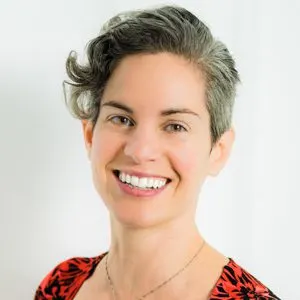
The author, Lillie Marshall, is a 6-foot-tall National Board Certified Teacher of English from Boston who has been a public school educator since 2003. She launched TeachingTraveling.com in 2010 to share expert global education resources, and over 1.6 million readers have visited over the past decade. Lillie also runs AroundTheWorld L.com Travel and Life Blog, and DrawingsOf.com for educational art. Do stay in touch via subscribing to her monthly newsletter, and following @WorldLillie on social media!
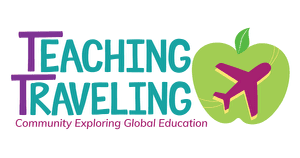

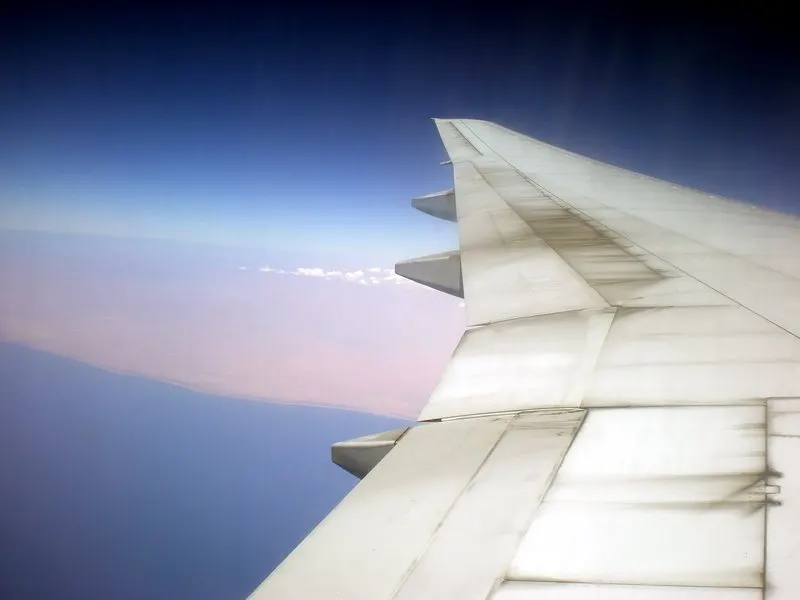
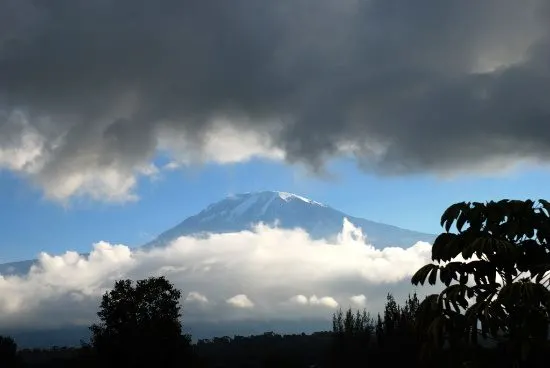
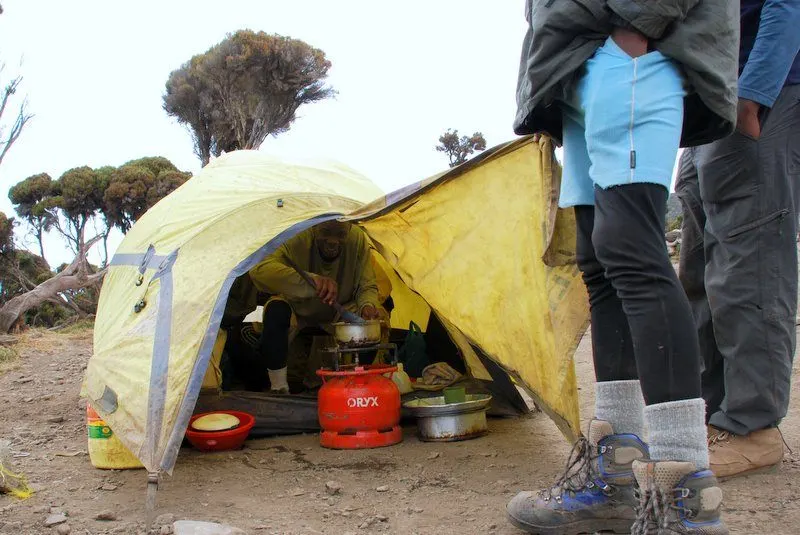
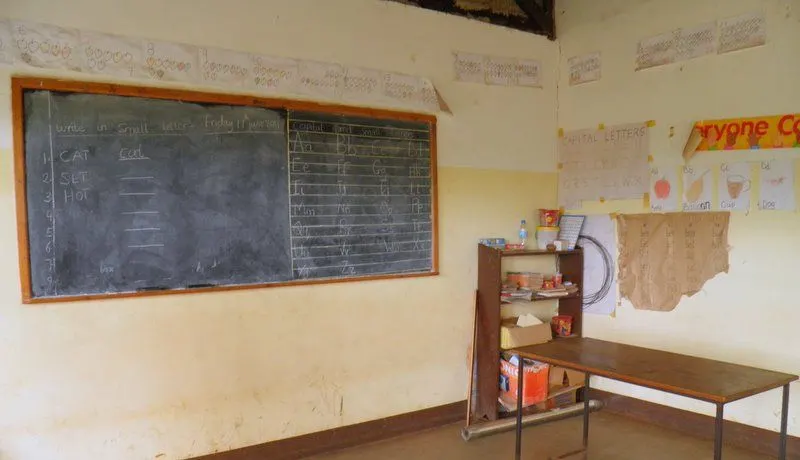
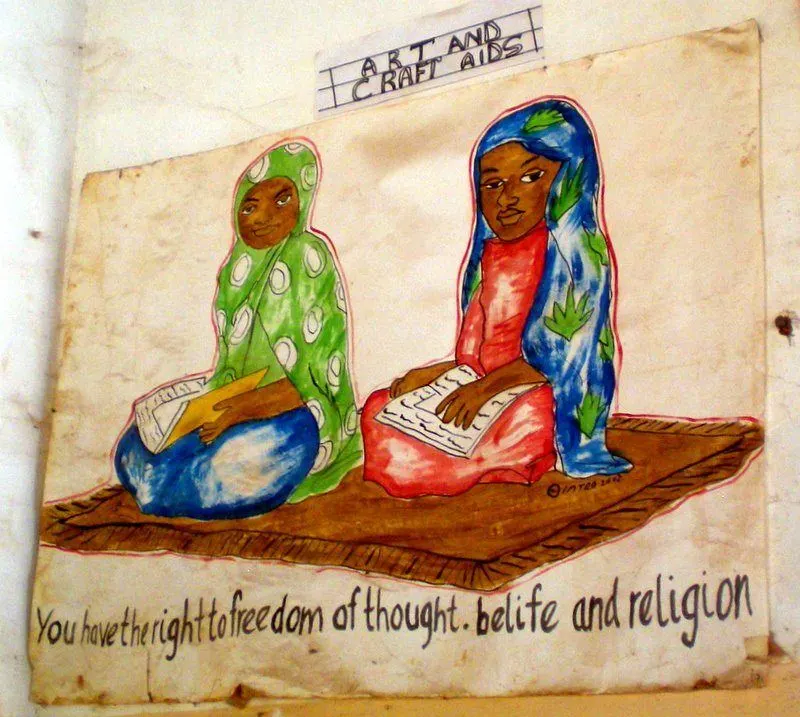
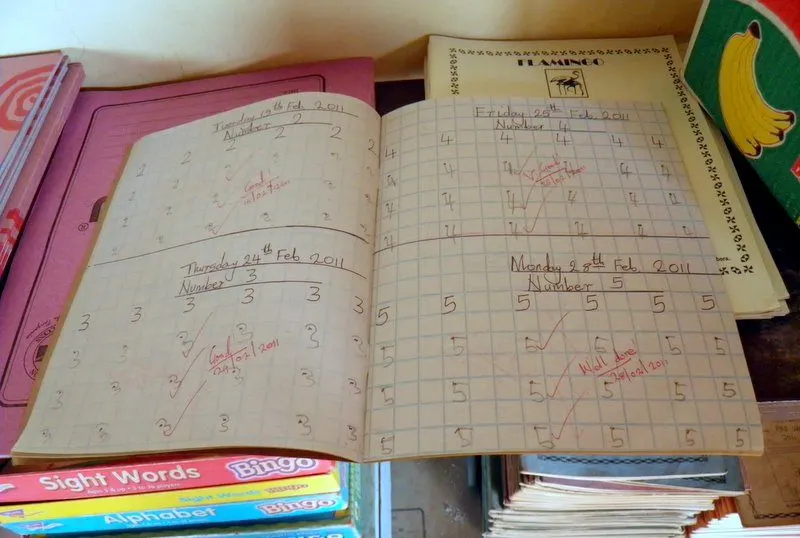
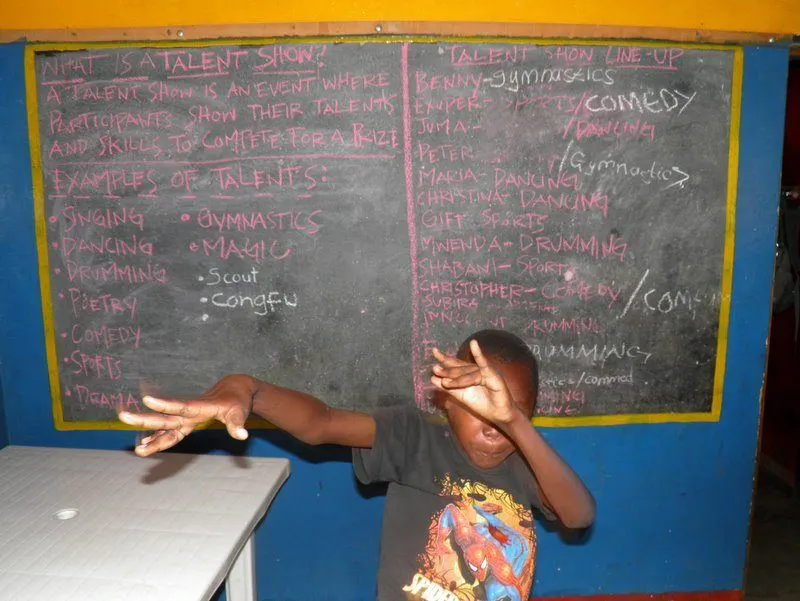
Debbie Pilson
Friday 12th of July 2013
I stumbled onto your story and was fascinated. My heart is beating fast and I feel something is going on. I travelled to Tanzania on a safari just a few weeks ago for 12 days. I fell in love with not only the wildlife and landscape but also the people. We experienced so many cultural things...including a visit to Shalom Orphanage Centre in Karatu, and a newly started Maasai school. Tanzania stole my heart--I've got to go back!!! But something else is also tugging at my heart--and that is to volunteer to teach English at least one month out of a year. I do work (at a non-profit helping older adults), so getting off for a month may be a challenge, and of course the expense of airfare and other costs. But I'm a firm believer when something is meant to be, things will work out. I love the idea of volunteering for a non-profit and the info. in this article really speaks to my heart. Maybe this is what I'm looking for. I don't know where Theresa's school is located and how to get involved in volunteering to help, but please share with me some more information. I have felt "the calling" several years ago to work with aging adults and now feel "the calling" to teach English or something with children in Tanzania. I am married; my husband works (our main supporter) so I can't move there. But how I wish I could!!!
francine
Saturday 13th of July 2013
Hello Debbie,
Thank you for taking the time to read my story and to comment!
I am actually back in Tanzania now, again with MAD. This is my fourth visit. I arrived in late June and will be returning to the US in early August. This past spring, I was awarded the travel grant through the program I mentioned above--Fund for Teachers--which provided funding for my air travel and to attend an intensive beginning Kiswahili course in the MS-TCDC Centre in Usa River, which is about 20 minutes outside of Arusha. Last week, I went to Moshi where I am now. I was also granted a quarter sabbatical from my district for the spring of 2014 and I hope to be able to return for a long period of time, perhaps 8-10 weeks, if it suits MAD's needs and schedule.
MAD does not have it's own school in Tanzania, but rather provides support, including covering the cost of tuition, for 22 kids. Their ages range from 11-20 now and they attend both primary (schule ya msingi) and secondary school (shule ya sekondari) private schools. The government schools in Tanzania, especially in rural areas and at the primary level, are often poorly supported and are not of good quality. That is why MAD sends students to private schools.
About 14 of the kids are living full-time at the orphanage now, while the others are in secondary school and board out there. Secondary boarding, particularly with private schools, seems to be the norm here. During their breaks, these kids return to stay at the orphanage; during December, I believe that all of the kids return to their home villages to stay with family members. In September, seven of the fourteen kids will graduate from primary school and in January, when the new school year begins, will move onto secondary and into boarding. The following year, the remaining kids, with the exception of 1, will graduate from primary and then they, along with the remaining primary level student, will move into boarding at their respective schools.
Because of the kids' transition to secondary schools, MAD itself is going through some exciting developments and directions and I feel fortunate to have been part of their program thus far.
There are many different organizations throughout Tanzania that offer opportunities for people to share their expertise. I believe that the best place to start is with some internet research. from there, you can determine where in Tanzania you'd like to stay and with what type of organization you'd like to connect with. You can also research options of home-stays, rural or urban placements, and "extras" like language training or travel opportunities.
There are numerous faith-based institutions and organizations based in the US and Canada that have programs here, too, and churches in your home town may already have some kind of relationship with a village or school. Because of the high rate of unemployment and other issues, the Tz government has raised the visa fee for volunteers to $500-$550. You probably came into Tz with a 3 month tourist visa at $100. I believe that there is another type of vistors visa for $200. If you are caught volunteering with a tourist visa, you can be (and perhaps the organization too) fined $500. Always ask about what type of visa you should get and/or if the organization will cover it for you.
As I wrote in my essay, expect to pay a fee to work with an organization. Some people are taken aback by this as the cost of the flight to Tz is expensive and they feel that they are providing a needed skill to the Tz-based organization. However, it is expensive to feed, house, and transport volunteers. Don't hesitate to ask what your fees cover, including asking how much of the fees actually go directly to the people that the program states that it serves.
If you go with an US-based non-profit, you may be able to use the costs related to your volunteer service, including airfare, as a tax-write off. That can be a big incentive! Again, don't hesitate to ask your organization!
As for teaching, it's my experience that most schools want longer-term volunteers (i.e. 3-6 months or longer). There is a national curriculum that goverment and most private schools follow. Students sit for national exams at Class 7, Form 2 and Form 4 (perhaps the equivalent of our 7th grade, 10th grade and 12th grade) which an determine competitve placement at high quality government schools, including A levels (Forms 5 & 6, schule ya juu sekondari). Forms 5 & 6 are the gateway to university study.
This is not to say that you can't provide informal or short-term language teaching and support outside of the schools or even as an "aide" of some sort within a school. There are many different ways to serve as a language teacher, including just talking with the kids in English!
I hope that I have been able to give you some additional insight and direction as you explore the possibility of returning to Tanzania. I still get a thrill as I step off the massive KLM plane at Kilimanjaro Airport! Volunteering/servicing abroad is highly satisfying and has definitely enhanced my life, both personally, spirtually and professional in ways that I could not have imagined.
Good luck!
Francine
Betty Grant
Tuesday 30th of August 2011
I was delighted to read Francine's story. Since, Theresa Grant is my daughter, I was so happy and proud to read your impression of the work being done by her organization. My girlfriend and I were fortunate to travel to Tanzania a year ago last spring to see with my own eyes what my daughter is doing and to better understand her passion of helpeing the children. Interesting enough, I am a Minnesota native, but have lived in Idaho for over 50 years as Iloved the mountains and the sports they offer. I want to encourage older people to follow their hearts and not feel they are too old to volunteer. I am a young 76 now and my friend in her early 70's so if your health is good , I would encourage you to volunteer! Sincerely , Betty
Francine Parling
Friday 21st of October 2011
Betty,
Thank you so much for your reply (and I apologize for the lateness of mine!). I can truly say that meeting and spending time with Theresa, as well as with the children at KKC and the other staff and volunteers of MAD, has transformed my personal and professional life in countless ways. You have the most amazing daughter! I also appreciate your call for older people to follow their hearts and to volunteer. I look forward to many more adventures in the years to come.
Sincerely, Francine Parling